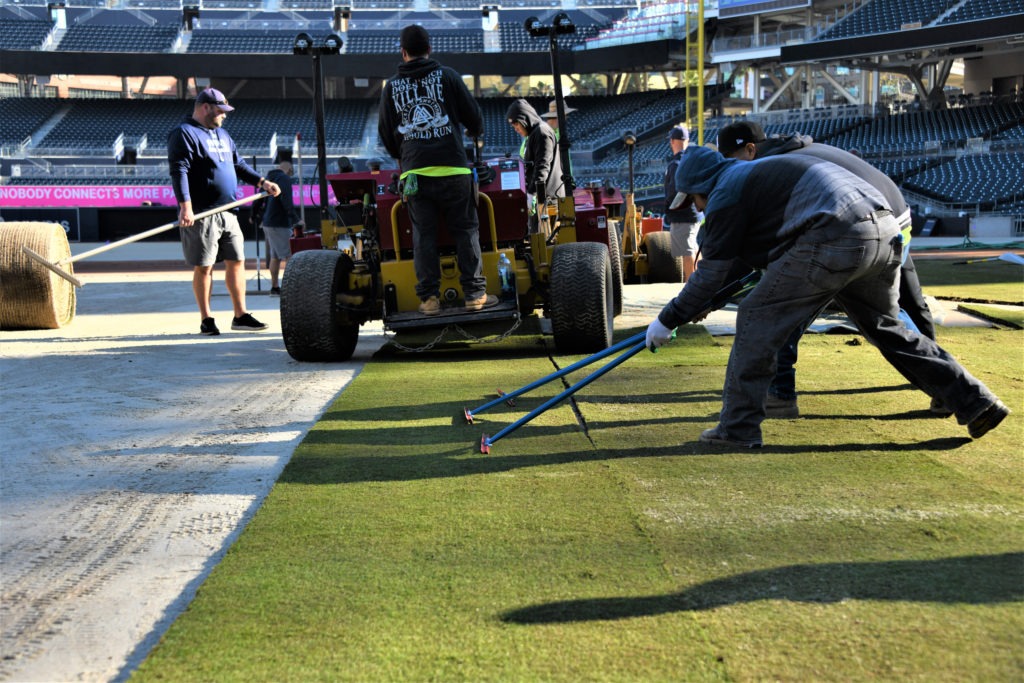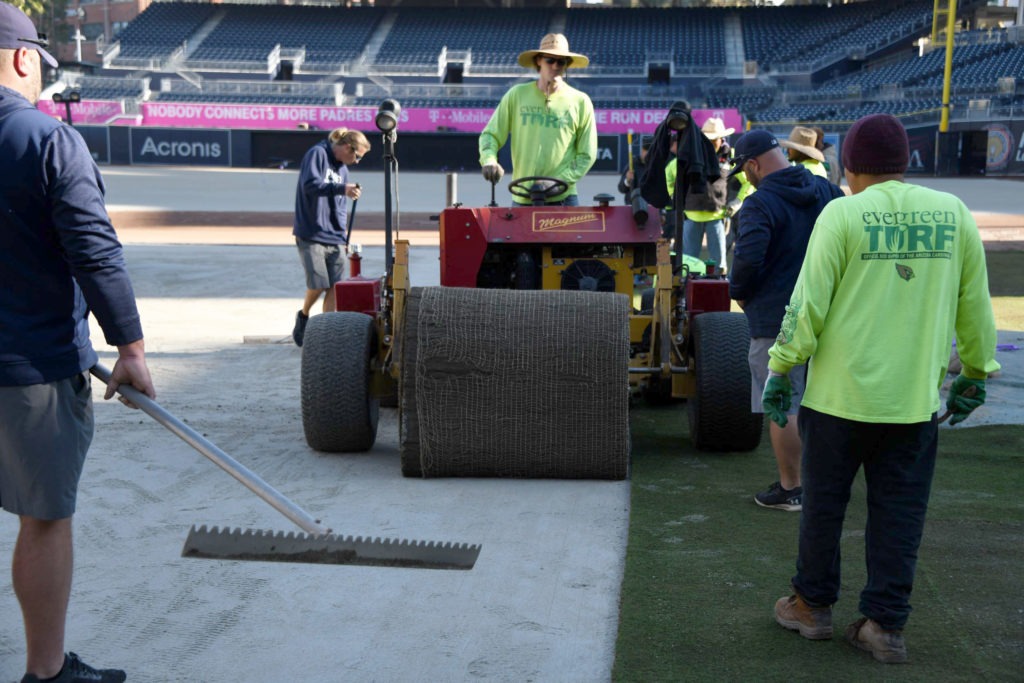
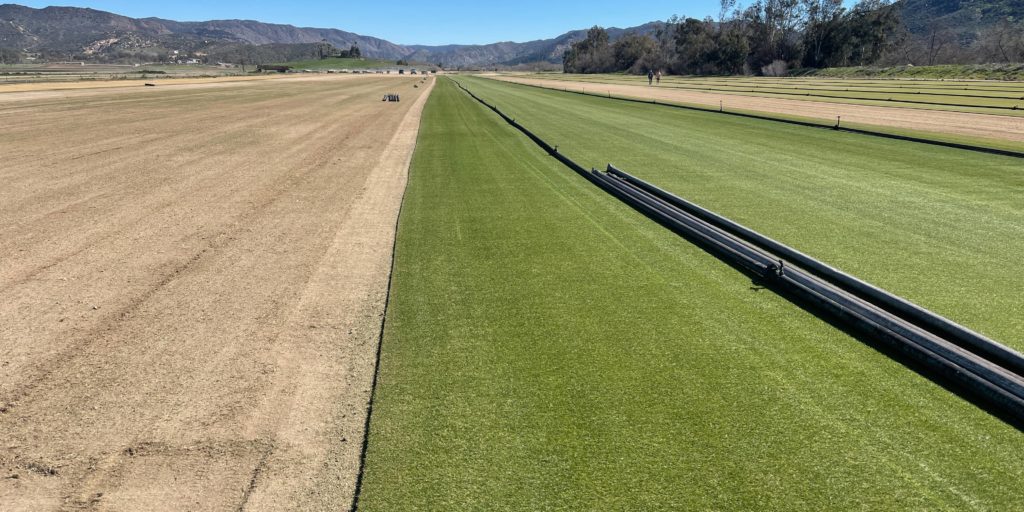
Growing for the Pros: Evergreen Turf Cultivates Success on the West Coast
In April 1999, Evergreen Turf began as a small, local sod farm in Arizona with a goal to provide homeowners and landscape contractors with an elite, golf-quality product.
Jeff Nettleton had been in the sod industry since his college days, working for a number of different operations in Nevada, Texas, Australia, and Arizona, but he dreamed of starting his own sod farm. While working in Arizona, he approached his friend Jimmy Fox who was selling fertilizer and seed to see if he could help find an investor to help start up the sod farm.
“We got together, put together a plan with our bank and 90 days later we were plowing dirt,” Fox said. “So that’s how we got started. Initially, I was going to be a silent partner and in 2001, two years after we got started, we’d hit our fifth-year projections.”
At that time, Nettleton was ready to bring on more management and so Fox decided instead of working a second job at a distribution company he would just go work with Evergreen Turf since he was a co-owner. Nettleton managed operations and Fox took over the sales for the business.
“Our original goal was to provide a quality product for landscape contractors. We really didn’t think we’d do golf for five years because it takes a while to build up a reputation in golf,” Fox said. “As it turns out one of the first jobs we did was a golf course and the second job we did was a golf course.”
In 2004, during their fifth year as a turf business, Evergreen Turf bought out Gardner Turf, one of their competitors in Arizona. “By 2006, we’d exceeded anything we’ve ever dreamed of. Originally, we were going to have six employees, no trucks and no installs but by 2006 we were running 12 trucks. We’re up to roughly 1,400 acres and 130 employees now. It was not the vision we originally had,” Fox said.
“We’d like to think that our goals and principles haven’t changed and one of the things we try to do even though we’re a little bit bigger company is to still make it feel kind of like family. And it gets harder the bigger or more corporate we become, but the reality is, we’re only as successful as the people we work with,” Fox said. “So, I think we have to surround ourselves with good people and treat them with the respect and dignity that those people are due. If you treat people well and surround yourself with good people, that is the cornerstone for building success.”
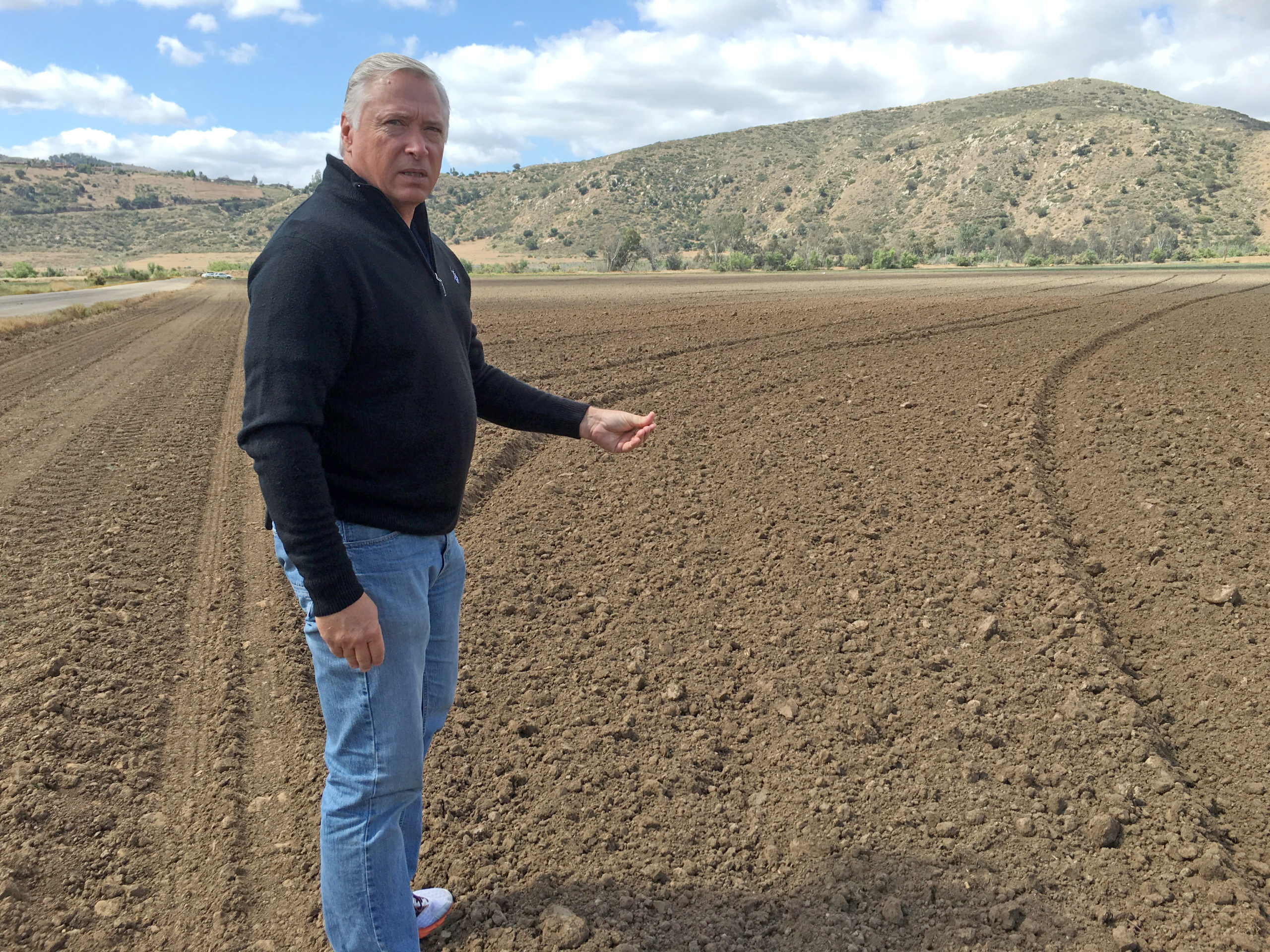
Jimmy Fox at American Sod Farms.
Diversifying
In their first few years of operation, Fox said they had several large contractors, but realized that it would be important to diversify so they didn’t have all their eggs in one basket. They began working directly with homeowners and smaller contractors. Fox said he also had to make sure their golf portfolio was strong and they started getting into sports field installations to broaden their customer base.
“When the downturn hit in 2007-08, we lost 90% of our golf and 90% of our large contractors overnight, literally. So, what carried us through the downturn until about 2011 was the small contractors and homeowners,” Fox said.
Now, Evergreen grows 13 turfgrass varieties in four states on over 2,000 acres. Over 1,000 of those acres and eight varieties are in Arizona and the remaining are in New Mexico and California.
Fox said one of their greatest accomplishments is that they’ve been able to stay true to their original goals to put out a high-quality product. “Quality is an overused term but when I say that I mean the right grass, mowed and harvested the right way for the particular customer that it’s intended for. That’s probably why we have too many grasses because we are customer-oriented and we’re in a market where there’s limited turfgrass use,” he said. “We think it’s important to try to touch all segments of the turfgrass business.”
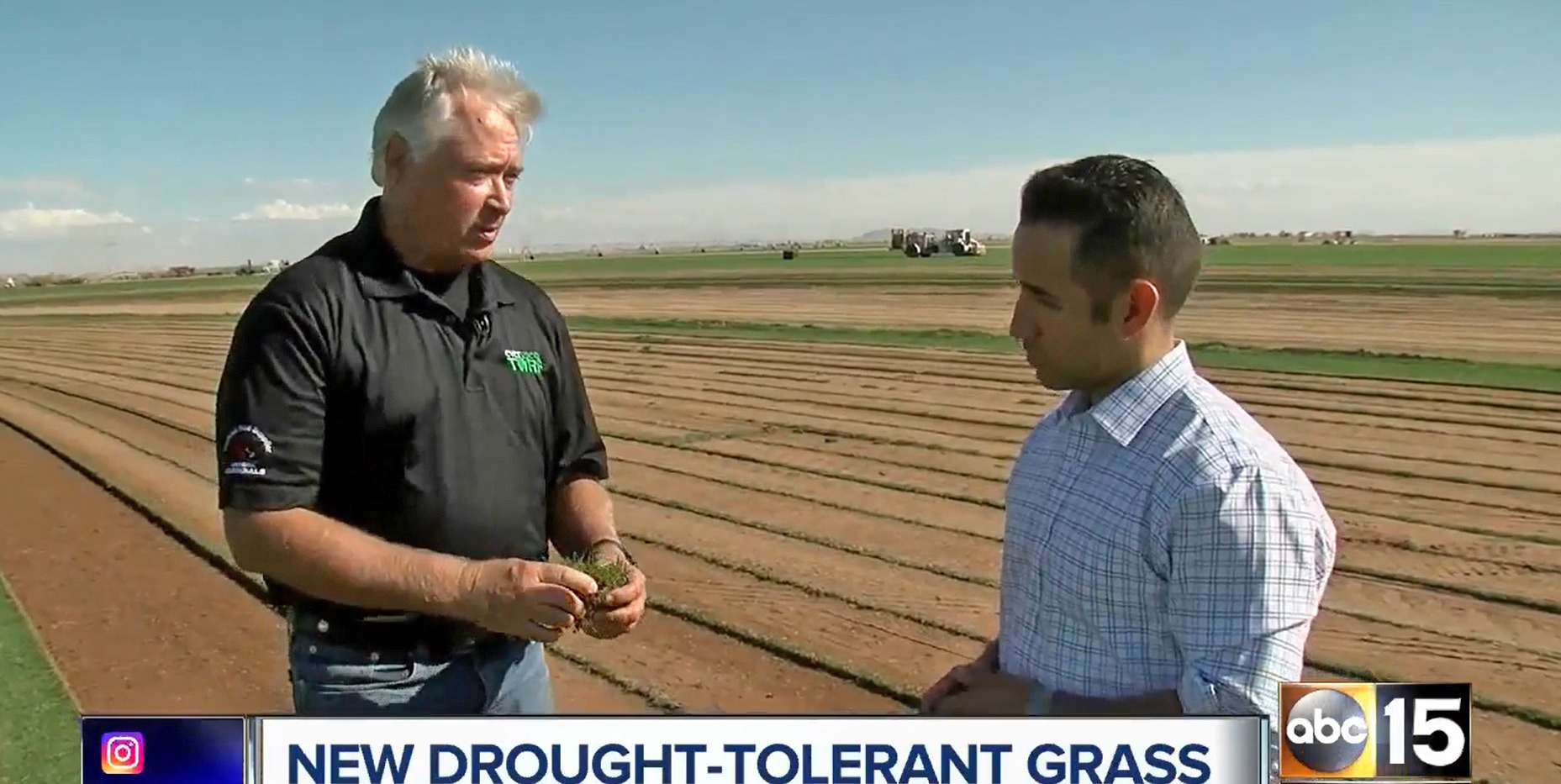
Jimmy Fox being interviewed about drought-tolerant grasses on News 15.
Environmental Impact
Fox explained that in the future turfgrass producers are going to have to be a little bit more aware of their environmental impact as water becomes more scarce and the areas turfgrass is being used is becoming even smaller. “We can’t just grow pretty grasses anymore, we have to grow grasses that have a particular use, grasses that don’t use much water, conserve nutrients, are low input and low maintenance,” Fox said.
Evergreen Turf is adapting to become more water-conserving and energy-efficient. “We always have to be aware of how we’re impacting the land and the environment around us. In the future, we’ll spend as much time looking at getting the right grass for a customer as we are trying to maintain the right quality to deliver to that customer.”
Better Grasses
Evergreen Turf started growing Latitude 36® Bermudagrass in 2016 when they took over the management of American Sod Farms in California. They completed an assessment of the market and discovered that the farm was mostly growing a cool-season grass variety, tall fescue which needs more water in the heat. Meanwhile, California was coming out of one of its largest droughts that year and it was crippling the sod industry. When it comes to drought resistance and water limitations on the West coast, Fox said warm-season improved cultivars are far superior to cool-season grasses.
“We decided we wanted to look to the future and rather than trying to establish a bunch of warm-season grasses like TifWay or TifGreen that were 40-50 years old, we wanted something cutting-edge with the best genetics,” Fox said. Evergreen Turf started growing Latitude 36 with that goal in mind, even before they knew much about it.
To their surprise, Fox said there were several architects building large projects in the area that also wanted to use cutting-edge, new grasses. “We were able to get Latitude 36 in the new soccer stadium going in for the LA Football Club as well as on their new practice field facility. While we were doing that, the San Diego Padres were paying attention to what we were doing and they decided they wanted to try Latitude 36,” he said. “In a very short period of time, we had two very, very high-profile customers that took it on and we had no idea really how it was going to perform.”
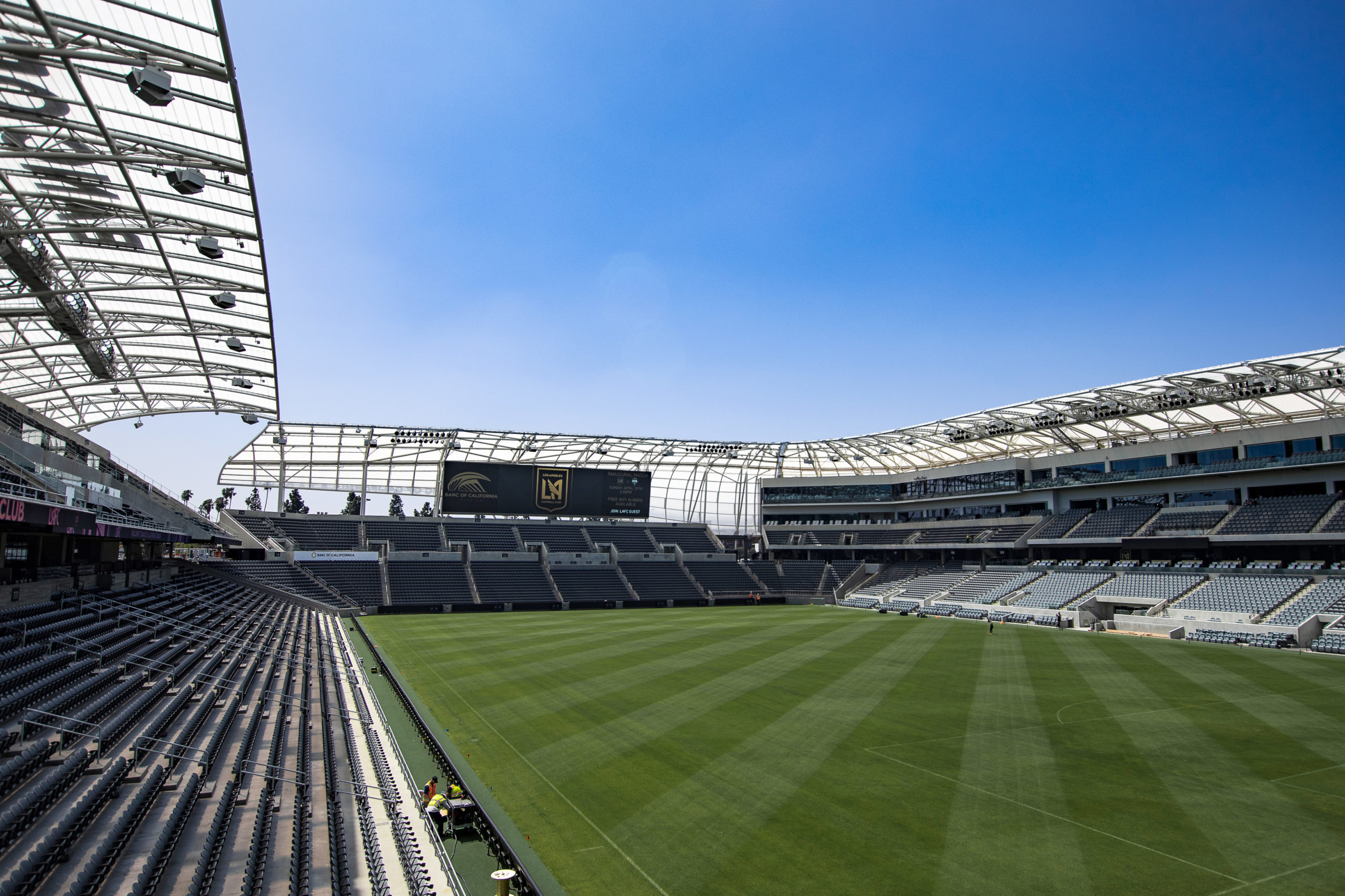
Banc of California Stadium, home of MLS Los Angeles FC.
“What we stumbled upon was what I think is one of the prettiest bermudagrasses I’ve ever seen. We grow different bermudas, and people say ‘well why Latitude 36?’ And we tell them there are grasses that are hardier and more drought-resistant, but when it comes to professional sports turf, there’s not a grass that looks better and performs at that level, especially for Major League Soccer (MLS) and Major League Baseball (MLB),” Fox continued.
Fox explained not only did they discover Latitude 36 performed well for these MLS and MLB sports fields, but they both liked to play with striping patterns on their field. “It becomes about aesthetics as much as it does about performance. And there is not a warm-season grass out there that stripes better than Latitude 36,” he said. “As the turf that we use for MLS and MLB fields, especially as you get close to the coast, there is not a grass that checks more boxes than Latitude 36.”
He said these stadiums have created a lot of buzz in Arizona and demand for Latitude 36 in these types of sports fields. Fox believes its striking appearance and unique color help it stand out among other bermudagrasses. Unlike other bermudas, Latitude 36 leaf blades grow lower down on the stem, so if the grass is accidentally scalped, it recovers very quickly and tolerates lower mowing heights.
Evergreen Turf mows Latitude 36 at ⅛ of an inch for putting greens, ¼ of an inch for golf course tees, and consistently between ⅓ and ½ inch for some of the professional sports turf. “It’s very adaptable and most grasses that you can mow that low don’t have great recovery, but the Latitude does. It’s a unique grass in that regard,” Fox said.
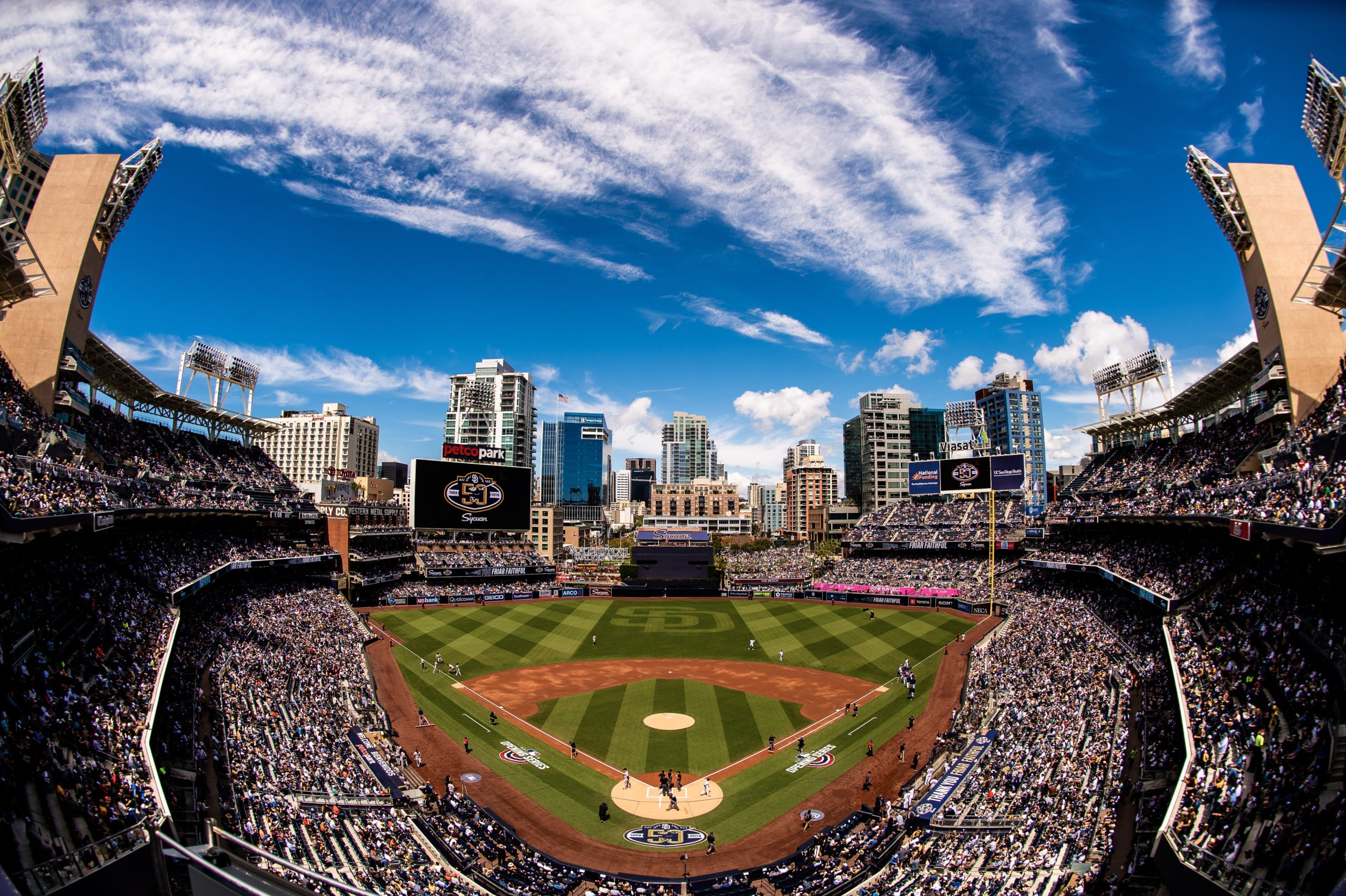
Opening Day 2019 at Petco Park, the San Diego Padres MLB Stadium.
Petco Park
Four years ago, Evergreen Turf installed Latitude 36 at the San Diego Padres MLB Stadium, called Petco Park. Previously, their stadium located right alongside the ocean had used warm-season grasses overseeded with perennial ryegrass. Fox explained they would suffer from the ryegrass hanging around too long or the bermudagrass would wear throughout the season and have a slow recovery period.
“They had a goal of installing non-overseeded bermuda in their stadium in February which is kind of hard to do because most of the farms that are growing warm-season grasses are growing more than 15 miles from the coast, which means they’re getting frost at night, the grasses are off-color and they’re semi-dormant,” Fox said.
Installing grass that early in the year would present the risk of the sod having weak strength and a dormant color. Evergreen Turf transplanted the Latitude 36 in February 2018 without ryegrass and the Padres season started just three weeks later.
“It had such good recovery and rooted so quickly that within three weeks you couldn’t tell it’d been sodded. They had the best opening day appearance they’ve ever had after just sodding three weeks prior,” Fox said. “The ownership was so happy with the way it looked, that from that point on the field managers said this is our grass. They are very dedicated to using Latitude 36 on that field.
“It’s a very unique, great grass and the turf management team for the Padres is just an outstanding crew. They’re very professional, very knowledgeable and honestly, once we put it in their hands, man they work magic with it. Those guys are just amazing,” Fox said.
Evergreen Turf installing Latitude 36 Bermudagrass at Petco Park.
Planning Ahead
Fox said their biggest challenge in California is growing enough Latitude 36 for everyone who wants it. Their primary issues are their amount of land in California and how much is available for sod production. This limits them to only take on as many sports stadiums as they can at one time, due to having enough grass for the initial field installation as well as in preparation for grass needs throughout the season. With stadiums like Petco Park, Evergreen Turf might sod it 2-3 times a year after events such as concerts, Supercross, Monster Truck, and more.
“You’ve got to keep that in mind and have enough sod available that you can surface that stadium when they need it. The same is true with the LA Football Club. We sod that field 2-3 times a year and they’re thinking they may want to do more and have more events,” Fox said. He explained there has been an influx in the number of events inside of these stadiums to generate revenue to make up for the two-year period during the height of the COVID-19 pandemic when they weren’t able to host events.
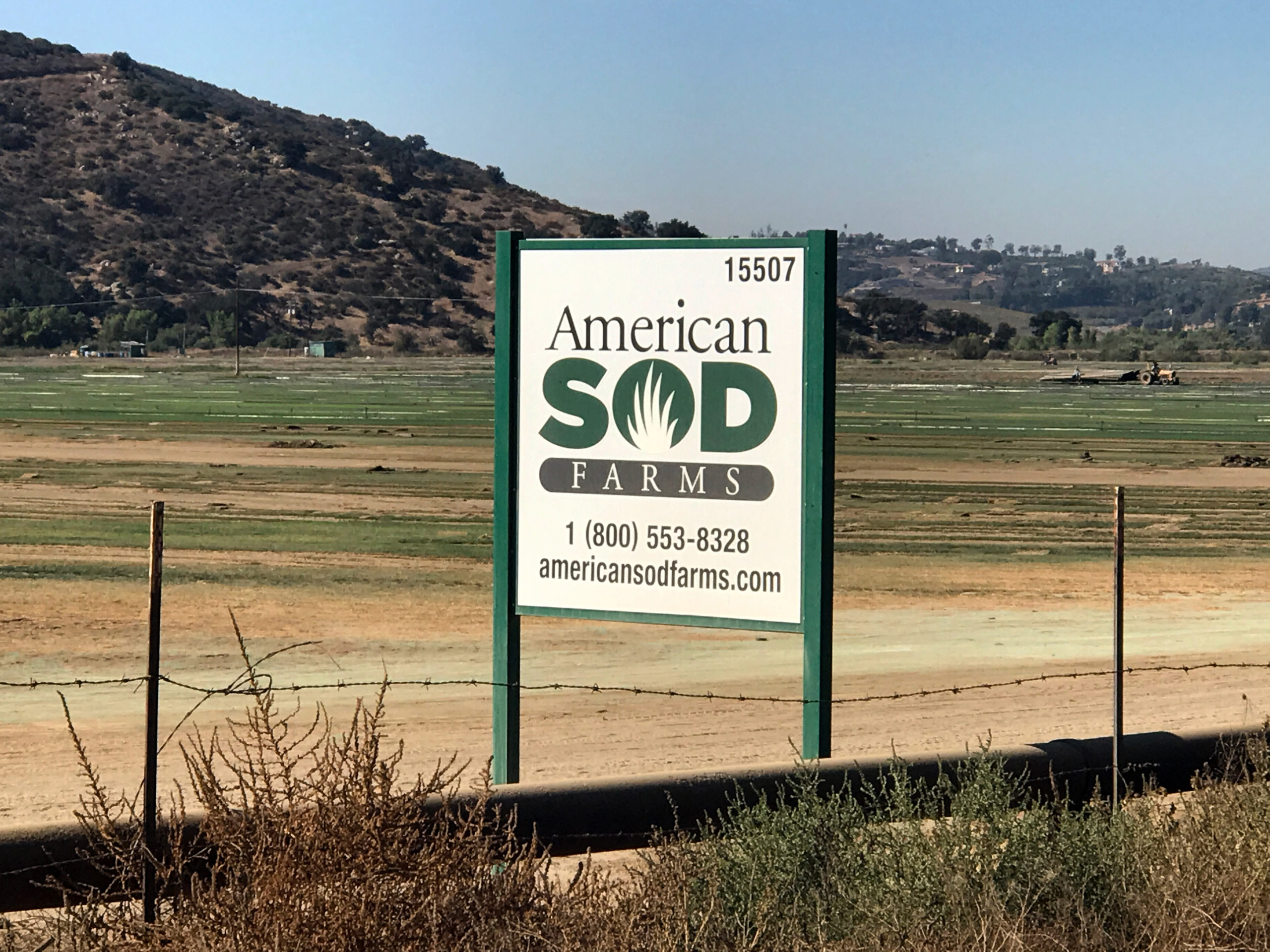
Evergreen Turf acquired American Sod Farms, a farm in Escondido, CA.
Farming
Evergreen Turf and their sister farm in California, American Sod Farms, has a lot of high-end customers aside from the San Diego Padres and the LAFC stadium. They provide turfgrass for the Arizona Cardinals, the Las Vegas Raiders, a handful of spring training baseball fields and more. Fox said while many believe what goes on at the farm is similar to what they do on golf courses and sports fields, the reality is a sod farm is more of a conventional farm than it is a turf maintenance program.
“You can’t go out and have a big pretty farm and make money. When we are making money is when that field is brown and you’ve harvested all the sod that’s left. And we’re not out there mowing it at 1/2 an inch for a year, we’re mowing it at 1/2 an inch for six weeks right before it goes out the door,” Fox said.
He went on to explain the timing on the farm to get the product to peak at just the right time and not overmanaged is critical. Fox said an easy way to lose money in the sod business is to spend too much time maintaining it. “It really is more of an agricultural entity than it is maintenance, and most people don’t understand that,” he shared.
Fox said they continuously tell customers they’re growing their product for them and they’re welcome to look at it on the farm. “But just understand you’re going to see the good, bad and ugly when you come out. I think it helps people understand the process we go through to try to deliver the right product at just the right time and it’s not easy.”
For more information, visit EvergreenTurf.com.
This article was written by Cecilia Brown.
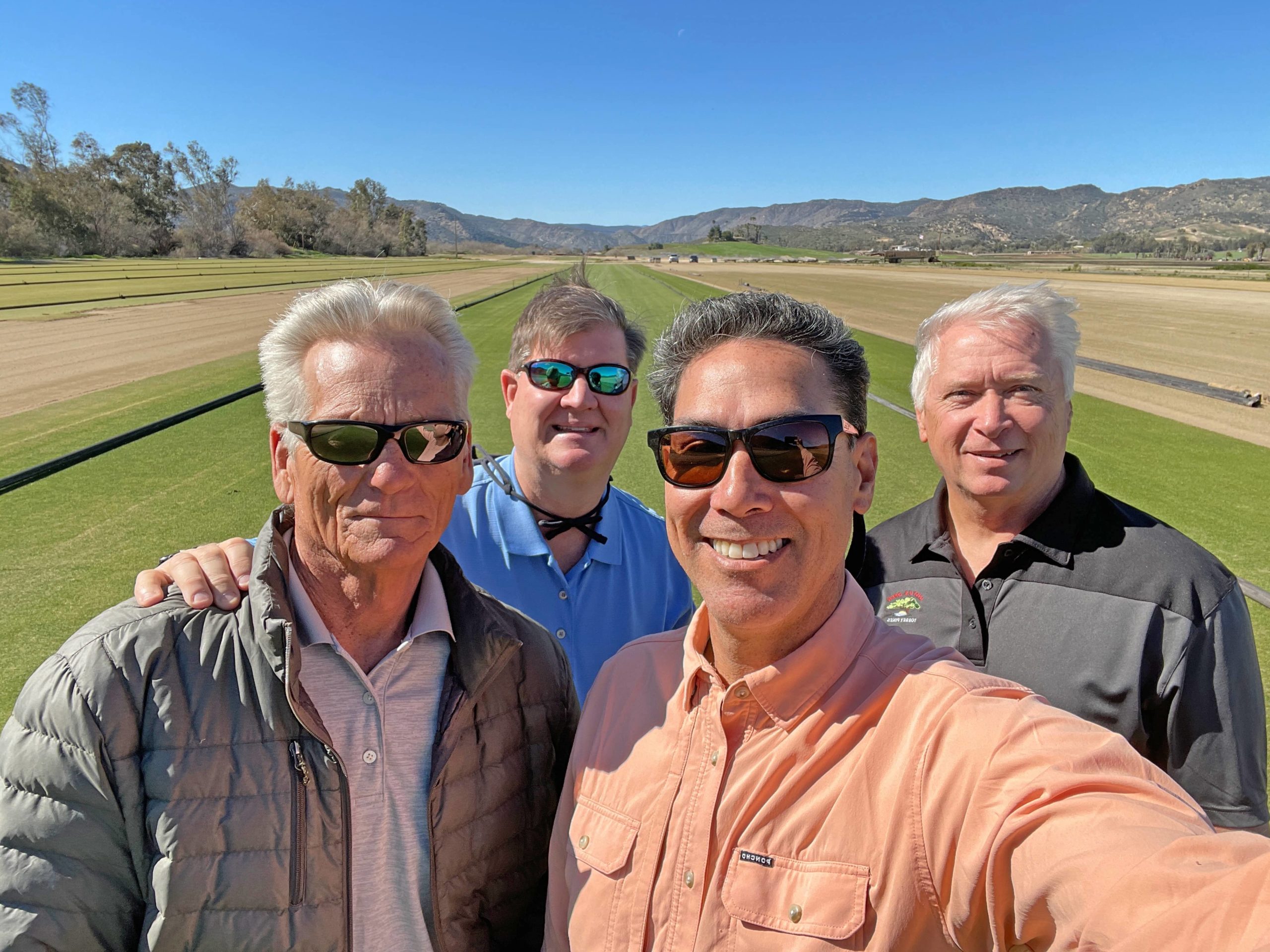
Evergreen Turf Farm Manager JR Wirthlin, Sod Solutions President Tobey Wagner, Sod Solutions Chief Operating Officer Christian Broucqsault and President of Evergreen Turf Jimmy Fox at American Sod Farm in Escondido, CA on Feb. 7, 2022.

